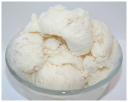Here’s something to do while the kids are home from school and you have vacation-itis. Entertain the folks with dinner cooked in the dishwasher.
Cooking Method & Considerations
Allow one 50-minute cycle for every 2lb of weight. Hermetically seal a seasoned turkey inside several appropriate turkey-sized oven bags.
Place the turkey in the dishwasher to steam-cook.
When cooking a turkey, ensure that the temperature of the meat doesn’t rise above the recommended 145f by using a meat thermometer.
Test Run
As a trial run, a 5lb supermarket chicken was cooked in the dishwasher providing impressive results: firm, tender, moist breast meat.
Two cycles were used, and the bird was finished off in the oven to brown and crisp the skin.
Getting a whole turkey cooked this way might take all day, so




